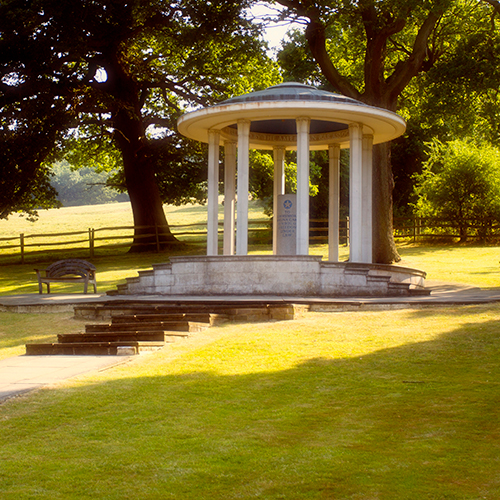Magna Carta, the Rule of Law, and the U.S. Constitution
Constitution Day is observed Friday, September 16, 2016. In celebration of the ratification of the U.S. Constitution, IAALS is joining with others around the country to share perspectives on the history, impact, and promise of the Constitution. This blog is part a series of Constitution Day posts, authored by members of the O'Connor Advisory Committee to our Quality Judges Initiative, which are collected here. Join the conversation in the comments below, or on Twitter with #ConstitutionDay.
 On June 15, 2015, members of the American Bar Association joined with their British counterparts on a water meadow on the banks of the Thames at Runnymede, county of Surrey, England, directly under the flight path of Heathrow Airport. This event culminated the celebration of the anniversary of perhaps the seminal document on the rule of law: Magna Carta. I had the privilege of not only attending the 800th Anniversary of the sealing of Magna Carta, but also of chairing the ABA’s London Programs leading up to the actual anniversary. After two years of planning, the celebration exceeded all expectations, with the Her Majesty the Queen, the Her Royal Highness the Princess Royal, other members of the royal family, the Prime Minister, the Foreign Minister, the Archbishop of Canterbury, and the U.S. Attorney General in attendance.
On June 15, 2015, members of the American Bar Association joined with their British counterparts on a water meadow on the banks of the Thames at Runnymede, county of Surrey, England, directly under the flight path of Heathrow Airport. This event culminated the celebration of the anniversary of perhaps the seminal document on the rule of law: Magna Carta. I had the privilege of not only attending the 800th Anniversary of the sealing of Magna Carta, but also of chairing the ABA’s London Programs leading up to the actual anniversary. After two years of planning, the celebration exceeded all expectations, with the Her Majesty the Queen, the Her Royal Highness the Princess Royal, other members of the royal family, the Prime Minister, the Foreign Minister, the Archbishop of Canterbury, and the U.S. Attorney General in attendance.
Magna Carta has rightfully been described as the signal document in the move from the “law of the ruler” to the “rule of law." Yet, my participation in the 800th Anniversary celebration confirmed my belief that Magna Carta is perhaps more respected and held in higher esteem in the former colonies than in the country of its heritage. Indeed, until last year (when a new permanent sculpture entitled “The Jury” was dedicated), the only monument to Magna Carta at Runnymede was placed there by the American Bar Association in 1957. HRH the Princess Royal participated in the rededication of the ABA Magna Carta memorial on the anniversary.
Ruminations on Magna Carta can only lead to thoughts about the rule of law, and the influence of Magna Carta on the U.S. Constitution and the constitutions of many of the states. Sir Winston Churchill said, “Here is a law which is above the King and which even he must not break. This reaffirmation of a supreme law is the great work of Magna Carta; and this alone justifies the respect in which men have held it.” Lord Denning, the Master of the Rolls, said, “Magna Carta is the greatest constitutional document of all times – the foundation of the freedom of the individual against the arbitrary authority of the despot.”
Magna Carta, or at least the understanding of it in the 18th Century, had a strong influence on the United States Constitution and on the constitutions of the various states. Several guarantees that were understood at the time of the ratification of the U.S. Constitution descended from Magna Carta, including freedom from unlawful searches and seizures, the right to a speedy trial, the right to a jury trial, the writ of habeas corpus, and protection against loss of life, liberty, or property without due process of law, were included in the U.S. Constitution and the Bill of Rights.
Our Constitution is an enduring document protecting our rights and liberties. But it derived many of its provisions from the ideas of a group of rebellious English barons who imposed them on King John of England. Due to Magna Carta and the U. S. Constitution, we live in a society where the rule of law dominates over the “law of the ruler.”


